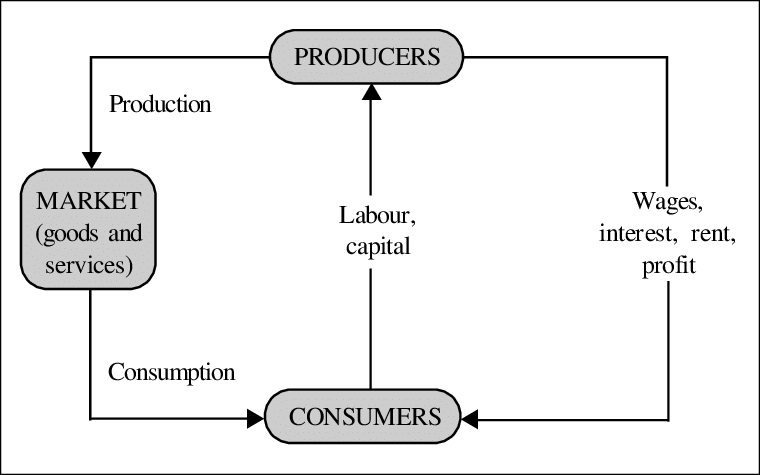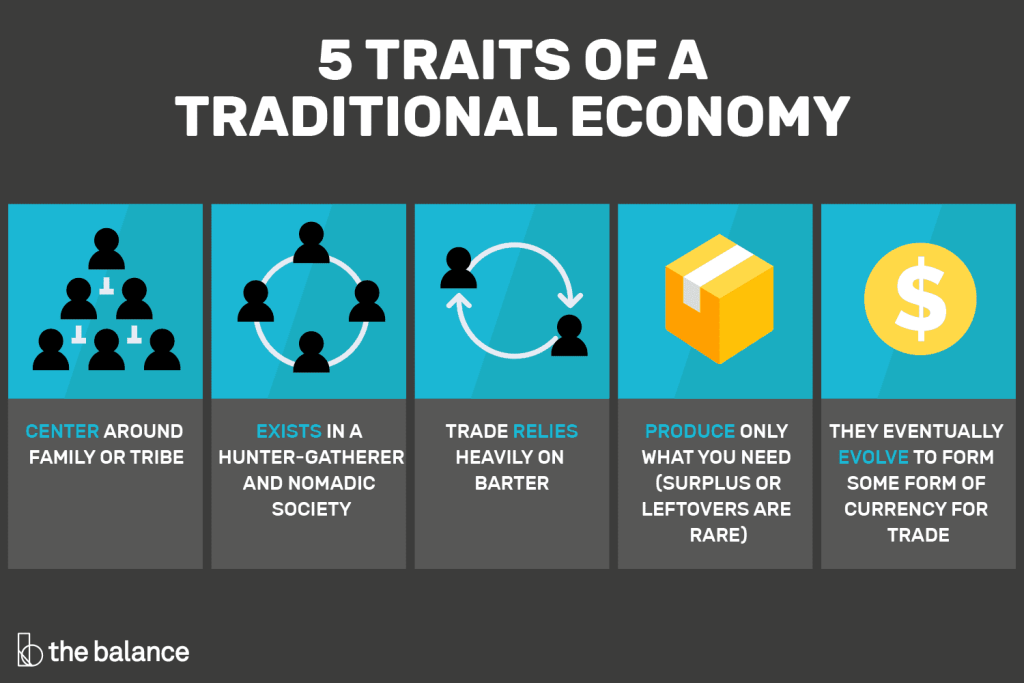Discover how traditional economies, rooted in ancient customs and sustainability, still thrive today! From tribal barter systems to eco-friendly practices, these communities offer timeless lessons in resilience and resource management. Could their principles reshape modern economics?

A traditional economy is an economic system where customs, traditions, and long-standing beliefs dictate production, distribution, and consumption. Unlike modern economies, which rely on market forces or government planning, traditional economies are shaped by cultural heritage and communal practices.
These systems are typically found in rural or indigenous communities where agriculture, fishing, hunting, and gathering remain the primary means of subsistence.
Historically, all economies originated as traditional systems before evolving into more complex structures. Today, while most nations have transitioned to market, command, or mixed economies, some communities continue to operate under traditional economic principles.
Evolution of the traditional economy
The traditional economy, often referred to as the pre-industrial economy, has undergone significant changes over the centuries. This evolution marks the transition from agrarian-based systems to the complex, technology-driven economies that define the modern world today. The following outlines key stages in the evolution of the traditional economy:
1. Agrarian and subsistence economy (Pre-industrial era)
- Origins: In ancient civilisations, economies were primarily agrarian, based on farming, hunting, and gathering. The majority of people worked in agriculture, producing enough to sustain their families or local communities.
- Barter System: Early economies relied heavily on the barter system, where goods and services were exchanged directly, without the use of money.
- Limited Trade: Trade occurred locally or regionally, with some exchange taking place through rudimentary forms of marketplaces. However, trade beyond the immediate area was often limited.
2. Feudal economy (Middle Ages)
- Manorial System: During the feudal period, the economy was based around a manorial system where lords owned the land, and peasants or serfs worked it. The focus was on agriculture and resource extraction.
- Localised Production: Production and consumption were local, with little external trade. Most goods were produced for local consumption, and surplus goods, such as grains and livestock, were traded within the region.
- Social Hierarchy: The feudal economy was characterised by a rigid social hierarchy, where land ownership and control of resources determined one’s position in society.
3. Mercantilism (16th to 18th Century)
- Expansion of Trade: With the rise of mercantilism in Europe, the focus shifted to increasing wealth through controlled trade and the accumulation of precious metals, such as gold and silver.
- Colonialism: European powers established colonies around the world to extract resources and expand markets, leading to a greater integration of global economies.
- Development of Money and Banking: Money began to play a central role in facilitating trade, with the establishment of banks and financial systems.
4. Industrial revolution (Late 18th to 19th Century)
- Shift to Industrial Production: The Industrial Revolution marked the end of traditional economies in many parts of the world. Factories, mass production, and mechanisation replaced manual labour and artisanal production.
- Urbanisation: As industries grew, people moved from rural areas to urban centres in search of work, leading to rapid urbanisation.
- Global Trade and Capitalism: New transportation networks, such as railways and steamships, made global trade more feasible, while capitalism emerged as the dominant economic system, promoting private ownership of businesses and competition.
5. Post-industrial economy (Late 20th century to present)
- Service and Knowledge-Based Economy: In the post-industrial era, economies shifted away from manufacturing and agriculture towards services, technology, and information sectors. Knowledge-based industries, including finance, IT, and education, became the backbone of modern economies.
- Globalisation: The world became increasingly interconnected, with businesses operating on a global scale. Advances in communication technology and transportation allowed companies to outsource production, fostering a global supply chain.
- Technology-Driven Economy: The rise of the internet and digital technologies revolutionised industries, creating new economic models. The traditional economy gradually transformed into a digital economy where data, algorithms, and artificial intelligence play key roles.
6. Digital and sustainable economy (21st Century)
- Digital Transformation: Modern economies are increasingly driven by digital platforms, automation, and artificial intelligence, affecting industries from finance to healthcare.
- Sustainability Focus: There is a growing emphasis on sustainability and the green economy, with businesses and governments prioritising environmentally friendly practices and sustainable development.
- The Gig Economy: Flexible work arrangements, such as freelance and short-term contracts, have become more prevalent, leading to a shift away from traditional, long-term employment models.
Characteristics of a Traditional Economy
Traditional economies exhibit several distinct features:
- Family or tribe-centred: Economic activities revolve around kinship or tribal structures. Knowledge and skills are passed down through generations, ensuring continuity in production methods.
- Subsistence-based production: Communities produce only what they need to survive, with little surplus for trade. Hunting, fishing, farming, and handicrafts are common occupations.
- Barter system: Instead of using currency, goods and services are exchanged through bartering. For example, a farming community may trade crops with a neighbouring group that specialises in fishing.
- Nomadic or semi-nomadic lifestyle: Some traditional economies, particularly those reliant on hunting or herding, follow migratory patterns to access resources.
- Limited technological advancement: Production relies on rudimentary tools and techniques, with minimal industrialisation or mechanisation.
- Sustainability and environmental harmony: Traditional economies often use resources conservatively, avoiding overexploitation. Their methods are typically eco-friendly, as they depend directly on natural resources.
How a traditional economy works

In practice, a traditional economy operates without formal institutions like banks, taxation systems, or central authorities. Leadership typically resides with elders or respected members of the community, who resolve disputes and oversee the equitable distribution of resources.
For example, a tribal group may hunt together and distribute the meat among all families according to custom. Similarly, a farming community may hold communal harvests and storage, ensuring everyone receives their share based on family size or contribution.
Economic growth is not a primary objective. Instead, the focus remains on sustainability, stability, and the preservation of heritage.
Examples of traditional economies
While pure traditional economies are rare today, some indigenous communities still operate under these principles:
- The Sami People (Scandinavia): Traditionally reliant on reindeer herding, fishing, and hunting.
- Inuit Communities (Canada and Alaska): Depend on hunting and fishing, with a strong emphasis on communal resource-sharing.
- Amazonian Tribes (Brazil): Engage in subsistence farming, hunting, and gathering, with trade occurring through barter.
- Maasai (East Africa): Primarily pastoralists, herding cattle as their main economic activity.
Traditional Economy vs. Digital Economy
The traditional economy and the digital economy represent two fundamentally different economic systems, shaped by distinct technologies, practices, and societal structures. Below is a comparative analysis of their key differences, advantages, and challenges.
Traditional Economy
1. Basis of Operation
- Agriculture and manufacturing: The traditional economy is primarily based on agriculture, mining, and manufacturing. The bulk of economic activity focuses on the production of goods through physical labour and resource extraction.
- Barter and currency: In many traditional economies, bartering was common, and physical currency is used for transactions.
2. Key Characteristics
- Limited technology: Relies on manual labour and basic tools. Technology plays a minimal role in production.
- Localised markets: Goods and services are mostly exchanged within local or regional markets. Global trade is often limited.
- Labour-intensive: The economy depends heavily on human effort in farming, crafting, and other physical work.
- Fixed resources: Economic activity is constrained by natural resources such as land, minerals, and water.
- Low specialisation: Workers often take on multiple roles and possess broad skills to manage different tasks.
3. Examples
- Agrarian economies: Societies focused on farming, where the bulk of the population is engaged in agriculture (e.g., pre-industrial Britain).
- Feudal systems: Economy centred on the manorial system with landowners and peasants (e.g., medieval Europe).
- Early trading systems: Barter systems common in ancient civilisations (e.g., Ancient Egypt or Mesopotamia).
Digital Economy
1. Basis of operation
- Technology and data: The digital economy is based on the use of digital technologies, data, and the internet. It focuses on the production and distribution of services and goods through digital platforms, leveraging technology like AI, big data, cloud computing, and e-commerce.
- Electronic transactions: It relies on digital currencies, online transactions, and digital platforms for buying and selling.
2. Key characteristics
- Technology-driven: Heavily reliant on digital tools, such as AI, blockchain, and cloud services, to automate and optimise production and distribution.
- Global reach: Digital economies are not constrained by geographic location, allowing businesses to serve international markets with ease.
- Data as a commodity: The digital economy thrives on the collection, analysis, and monetisation of vast amounts of data.
- Automation and AI: Automated systems and artificial intelligence optimise production and business operations, reducing the need for human intervention.
- High specialisation: The workforce is highly specialised in fields such as software development, data science, and digital marketing.
- Services over goods: The focus has shifted towards the provision of digital services, including software, entertainment, education, and e-commerce.
3. Examples
- E-commerce platforms: Companies like Amazon, eBay, and Alibaba, which facilitate the buying and selling of goods over the internet.
- Digital content providers: Platforms such as Netflix, YouTube, and Spotify that distribute media through digital means.
- Tech-driven businesses: Companies like Google, Microsoft, and Tesla that integrate technology in almost every aspect of their operations.

Traditional economy vs other systems
| Feature | Traditional Economy | Market Economy | Command Economy | Mixed Economy |
| Decision-making basis | Customs and traditions | Supply and demand | Government planning | Combination of all three |
| Use of currency | Rare, relies on barter | Widespread | Central control | Partial |
| Technology | Minimal, often manual tools | Advanced | Varies | Moderate to advanced |
| Goal | Community survival and tradition | Profit | Resource equality | Balanced growth |
| Flexibility | Low | High | Medium | Medium to high |
Final thoughts
The traditional economy, shaped by generations of customs and lived experiences, stands as a reminder of humanity’s original relationship with nature, community, and work. Though often overshadowed by modern economic systems, it offers enduring lessons on sustainability, equality, and simplicity.
As global challenges become more complex, there may be renewed appreciation for the principles underpinning traditional economies. Whether through cultural preservation or sustainable development practices, traditional economies continue to hold relevance in today’s world, particularly when integrated respectfully and responsibly into broader economic conversations.

Himani Verma is a seasoned content writer and SEO expert, with experience in digital media. She has held various senior writing positions at enterprises like CloudTDMS (Synthetic Data Factory), Barrownz Group, and ATZA. Himani has also been Editorial Writer at Hindustan Time, a leading Indian English language news platform. She excels in content creation, proofreading, and editing, ensuring that every piece is polished and impactful. Her expertise in crafting SEO-friendly content for multiple verticals of businesses, including technology, healthcare, finance, sports, innovation, and more.









